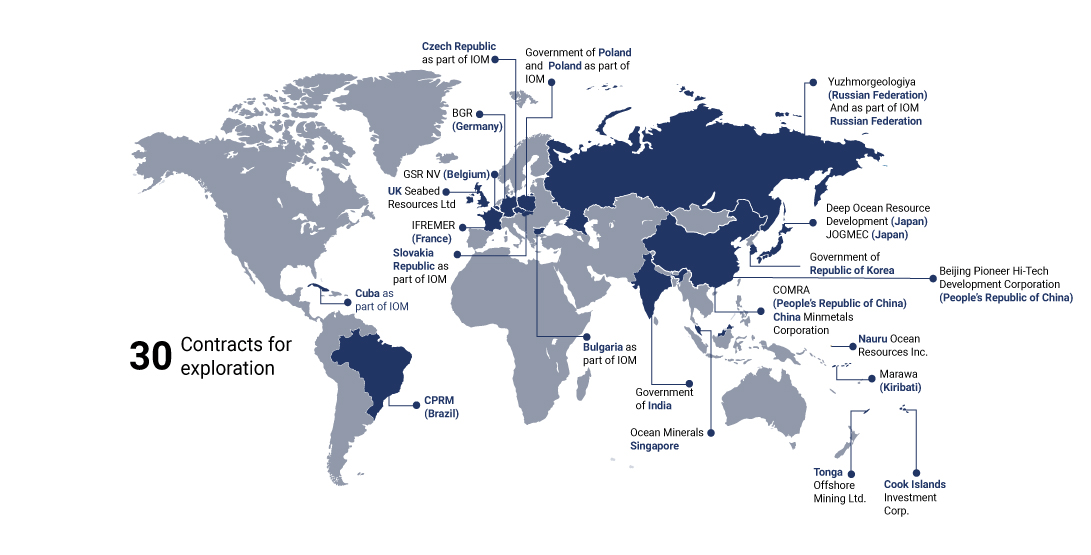The current situation of deep seabed mining
After reading quite a bit about deep seabed mining in my Blog (hopefully) you might have started to wonder if the Area and deep seabed mining are so important to me and to everyone, how come you have heard nothing about it from the media? How come these wonderful influencers on TikTok or Instagram have never covered this topic at all? (It is not completely true, at least the part about the media).
There is a particular reason why the deep seabed mining topic is widely unknown. There are some obvious aspects: deep seabed mining has very little effect on our daily lives. In addition, there are environmental concerns that hinder deep seabed mining activities, if you read the Blog post Dangers it might give you some understanding of what I have in mind. Nevertheless, possible dangers are a small part of the reason.
Historically, the first obstacle for deep seabed mining was the lack of technology. Now the technology is available so deep seabed mining might be profitable. Nevertheless, deep seabed mining is still not happening in the full economic scale due to the lack of a necessary legal framework.
There are three deep seabed mining stages : prospecting, exploration, and exploitation (do not ask me why it was created in UNCLOS and we must deal with it). As discussed in the previous Blog post ISA, it is responsible for the Area and its resources consequently. It creates the necessary legal framework for deep seabed mining. Currently, the necessary legal documents are in place for prospecting and exploration while exploitation is on the way. In fact, the draw exploitation regulation is already ready and should have been approved in 2020, but as of now it is foreseen for 2021. Later Blog posts will address the draw document as well.
It should be noted that all relevant legal documents or regulations for deep seabed mining are focused on different resources, not on different activities. Thus, all different resources discussed in the post Resources have their own regulation which covers prospecting and exploration activities. Consequently, there is a regulation for polymetallic nodules, etc. Nevertheless, all current regulations are practically identical and have only insignificant differences, so prospecting and exploration of different resources are practically identical.
Prospecting. Prospecting is defined as a search of relevant mineral deposits and estimation of their composition, sizes, distribution, and their economic values, without exclusive rights in the deposits.1 It follows that entities involved in prospecting activities within the Area are permitted only to search and define mineral deposits. The application procedure is very basic. The prospector must notify the ISA and wait to start the prospecting until his notification is recorded.2
Exploration. It is the searching for deposits of polymetallic nodules [or other resources] in the Area with exclusive rights, the analysis of such deposits, the use and testing of recovery systems and equipment, processing facilities and transportation systems and the carrying out of studies of the environmental, technical, economic, commercial and other appropriate factors that must be taken into account in exploitation.3 It is evident that the exploration phase is a preparation for commercial mining, aka exploitation. Therefore, the requirements to start exploration are much tighter.
Briefly, the applicant addresses its application as set out in Annex II of the Regulations to the Secretary-General.4 The Secretary-General must send an acknowledgment of the receipt within 30 days and inform the Authority of the receipt and circulate information of general nature. The last obligation for the Secretary-General is to inform the LTC (for more information on LTC which will examine the application.5 Thereafter, the LTC will examine the application and if it finds that the application meets the requirements, it will recommend it to the Council for approval.6 Finally, the Council will consider the recommendation of LTC and in case the application will be approved, it will be prepared as a form of contract to sign.7
Exploitation is the recovery for commercial purposes of polymetallic nodules in the Area and the extraction of minerals therefrom, including the construction and operation of mining, processing and transportation systems, for the production and marketing of metals.8 There is no purpose to talk about exploitation anymore as it yet not started.
So far, 30 contracts for 15 years period9 are signed for exploration while no one is counting how much prospecting is permitted. 30 contracts might not seem as much, but in 2014, only 16 exploration contracts had been in force.10 Please see below who are those 30 contracts.

Contracts for exploration. Credit - ISA website.
P.S. A gentle reminder: for the deeper and more comprehensive analyses of procedures and regulations please check my thesis.
1 Regulations on Polymetallic Nodules regulation 1(3)(e), Regulations on Cobalt-rich Ferromanganese Crusts regulation 1(3)(e), Regulations on Polymetallic Sulphides regulation 1(3)(e).
2Regulations on Polymetallic Nodules regulation 4(2), Regulations on Cobalt-rich Ferromanganese Crusts regulation 4(2), Regulations on Polymetallic Sulphides regulation 4(2).
3 Regulations on Polymetallic Nodules regulation 1(3)(b).
4 Regulations on Polymetallic Nodules regulation 10(1), Regulations on Cobalt-rich Ferromanganese Crusts regulation 10(1), Regulations on Polymetallic Sulphides regulation 10(1).
5 Regulations on Polymetallic Nodules regulation 21(1), Regulations on Cobalt-rich Ferromanganese Crusts regulation 23(1), Regulations on Polymetallic Sulphides regulation 23(1).
6 Regulations on Polymetallic Nodules regulation 21(5), Regulations on Cobalt-rich Ferromanganese Crusts regulation 23(5), Regulations on Polymetallic Sulphides regulation 23(5).
7 Regulations on Polymetallic Nodules regulation 23(1), Regulations on Cobalt-rich Ferromanganese Crusts regulation 25(1), Regulations on Polymetallic Sulphides regulation 25(1).
8 Regulations on Polymetallic Nodules regulation 1(3)(a).
9 https://www.isa.org.jm/exploration-contracts visited 10/03/2021.
10 International Seabed Authority Report of the Secretary-General of the International Seabed Authority under article 166, paragraph 4, of the United Nations Convention on the Law of the Sea(4 June 2014) ISBA/20/A/2 para 54.
